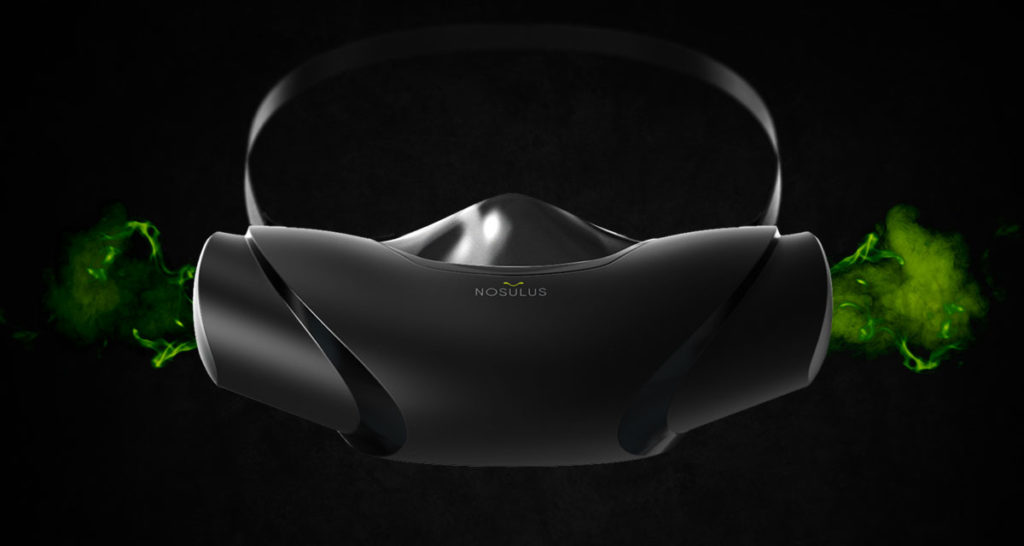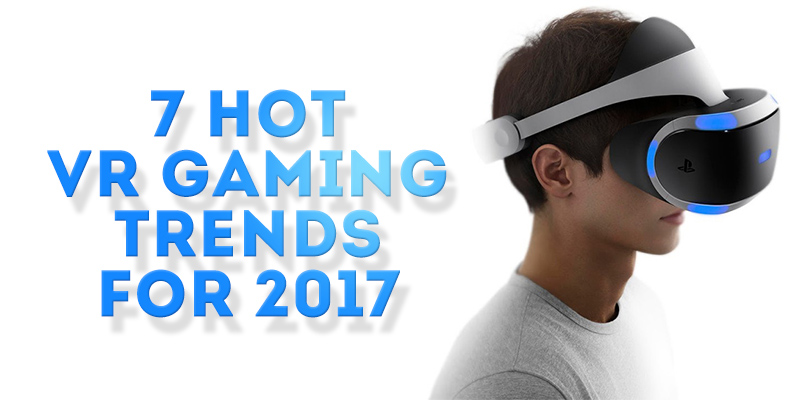The virtual reality gaming market is slated to top $45.09 billion by 2025. The lucrative VR gaming market will provide unfathomed opportunities for the developer willing to support the revolution, rather than reading about it in the news.
In this article, we will look at virtual reality gaming trends that are shaping the market, and we will see what changes you can expect to see in VR gaming through 2018 and even beyond.
New VR Gaming Headsets
Most articles on VR would lead you to believe that the Oculus Rift, Samsung VR, Google Daydream, Google Cardboard, Sony Playstation VR, and HTC Vive are the only VR headsets/viewers out there. While these are the platforms most-often targeted by VR gaming developers, a new breed of device is quietly closing in.
The Razor offers stereo eye tracking, superior image resolution, and immersive position tracking. Also touting impressive features, the Fove provides fee-free open-source development tools.
For those who want superior performance than that offered by Cardboard, but within a casual gamer’s budget, the Homido V2 and BOBOVR Z4 offer low-budget alternatives and markedly-improved performance.
These four devices are the result of two thought processes. In the case of the Razor and Fove, the designers wanted to offer devices that are competitive with high-end headsets on performance, but at lower price points. The Homido VR and BOBOVR Z4, on the other hand, do just the opposite — offering low-end viewers with superior performance, but at higher price points. Both trends will benefit VR gamers by offering alternatives, regardless of how much play money one has.
The trend toward knocking off gear on both ends of the spectrum will continue. The business model based on building a better mouse trap never seems to get old.
Haptic Feedback
Gamers are all about the experience. To be a winner, a game must be more than exciting, it must capture the player’s imagination. If the player cannot imagine himself or herself inside the game, they will walk away faster than you can fire a photon torpedo. Unfortunately, gamers can experience traditional games only through the senses of sight and sound.
VR games, in addition to providing an immersive audio/visual experience, also engage the player through the sense of touch — touch, vibration, and full-body physical assaults, to be more specific.
The ability to let players feel the recoil of a weapon, or the blow of a sword, is called haptic feedback, and it is already shaking up gameplay for VR gamers.

Haptic feedback virtual reality suit
Source: The Verge
Specially-designed “haptic motors”, embedded in gloves, vests, and other wearables, convert game action into physical sensations. By using a combination of motors — both large and small, haptic feedback devices can provide sensations ranging from a tickle to a sharp blow.
Haptic technology adds a powerful new feature to VR gaming. As more and more gamers get a feel for how haptic feedback enhances gameplay, it will become a standard feature in VR games.
Mobile Game Apps
As powerful as the HTC Vive and Oculus Rift are as VR gaming platforms, they are beyond the budget of many a dedicated gamer. Which leaves the field wide open for smartphone-based viewers such as Samsung Gear VR, Zeiss One Plus, Google Daydream View, and even Google Cardboard.
Advances in smartphone technology is rapidly closing the gap between smartphone-based viewers and high-end headgear. No longer must mobile VR game developers struggle to make games play well with existing smartphone technology. Thanks to VR-optimized phone processors, such as the Qualcomm Snapdragon 835, phones will now provide powerful, game-ready platforms for developers to target.
There will always be a market for high-end VR gaming headsets. And there will always be a market for mobile VR gaming. For the adventuresome developer, the choice does not have to be an either-or; why not target both?
Cloud-Based VR Gaming
Cloud computing offers numerous technical and business advantages that can benefit VR game developers and players alike.
From a technical perspective, the shared resources of cloud-based platforms can render games with high quality, high frame rate, low latency, and multi-platform compatibility. Digital service providers are already offering cloud-based entertainment and gaming transport services that support 100Gbits/s data transfers. As VR game developers look for hosting platforms on which to run their data-heavy games, cloud hosting will increasingly be the platform of choice.
Cloud platforms also make good business sense. Using the Gaming as a Service GaaS model, game distributors have a range of options on how to monetize their games. From ad-supported games to pay as you play, cloud computing supports just about every pricing strategy you could think of.
Personalized Gaming Content
You cannot escape it. Whether you consider autonomous automobiles or cutting-edge VR games, big data is there to empower and personalize the user experience. Big data’s effect on VR gaming can be nearly as significant as its impact on smartcars.
Consider this. By pooling user profile information, social media posts, and other personal information along with the user’s game play decisions, big data can benefit both the gamer and the game developer or distributor.
By analyzing the player’s personal information and game preferences, big data can be used to modify the game action in a manner that will most suit them. For example, if the player’s social media profile indicates hypochondria, the game can serve up a nice and deadly plague rather than a natural disaster.
In-game products and other offerings can also be tailored to achieve the highest conversion rate, depending on the user’s previous purchasing habits.
These two examples merely suggest some possible ways big data can (and will) penetrate the VR gaming market. The true scope of how VR gaming and big data will interact is probably beyond our current comprehension.
Educational VR Games
When you think VR games, Chronos, ADR1FT, or Grand Theft Auto V probably come to mind. What you may not realize is that some forward-looking gaming companies are scoring big with educational games. Titles such as Titanic VR, Engage, and Apollo 11 VR not only tap the power of VR technology to entertain, but also to educate.
It should come as no surprise that VR gaming has a seat in the classroom. Educators have long-since realized that games help students learn material better than books or even videos. The interactive capabilities of virtual reality technology actually supercharges the learning process by creating multiple neural pathways by which information is absorbed and retained.
While no classroom VR game is likely to achieve the $700+ million earned by Grand Theft Auto, the education industry is a wide and deep market ready for the taking — at least for developers who have done their homework.
Growing Need for Developers
For awhile — for a long while, the demand for VR game developers reflected the uncertainty of VR as a viable industry. Thanks to a handful of startups, motivated by a visionary gaming market, VR game development is now regarded by serious analysts as serious business. Multi-billion-dollar market projections and ripening VR technologies have silenced all but the most nearsighted of naysayers.
With companies such as Microsoft, Facebook, Samsung, HTC, Google, Sony investing billions in VR gaming, it is time for those who want aboard to come aboard. Of course, the market for standard “low tech” games will remain strong for years to come, but VR gaming stands ready to overshadow it in both revenue and market share.
Yes, the writing is on the wall: VR gaming represents the very future of computer gaming. Game developers who want to shape that future are already hard at work. Those who still need convincing will be playing the game of catch-up later on.
Future Trends for Virtual Reality Training
The seven trends we have discussed will drive development through 2017. But what about beyond the foreseeable future? What wondrous advances in VR technology are being hinted at by leading developers? You might say, the answer is in the air.
Already cooking in the back of R&D labs is VR technology that can programmatically simulate the user’s sense of smell and taste. By manipulating neurochemicals, games can enable players to smell or taste whatever the game play dictates.

Nosulus Rift - virutal reality smell headset
Source: Nosulusrift.ubisoft.com
What value could such capability possibly have in VR gaming, you ask? Ever smelled the burning rubber of a race car, or the acrid odor of an exploded handgrenade? You will.
How AppReal-VR Can Help
Virtual reality gaming is a market waiting to be captured. But only those who are prepared for the fiercely-competitive field of VR development will do the taking.
Success will require a solid understanding of VR technology, gaming technology, and mobile app development. Not every gaming developer possesses such a combination of expertise. That’s where AppReal-VR comes in.
Appreal-VR is a leading provider of outsource development services. We specialize in virtual reality applications, gaming, and mobile app development. Our world-class developers can take your gaming idea from concept to market, no matter how simple or complex it may be.
We offer virtual reality development cost options to suit any budget, and any timeline.
Why not contact us today for a no-cost consultation? With AppReal-VR as your technology partner, your success is virtually assured.

 (3 votes, average: 4.67 out of 5)
(3 votes, average: 4.67 out of 5)